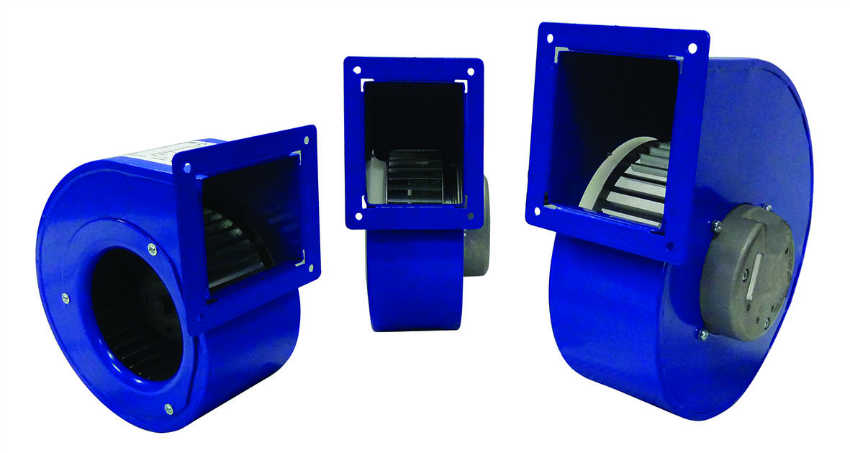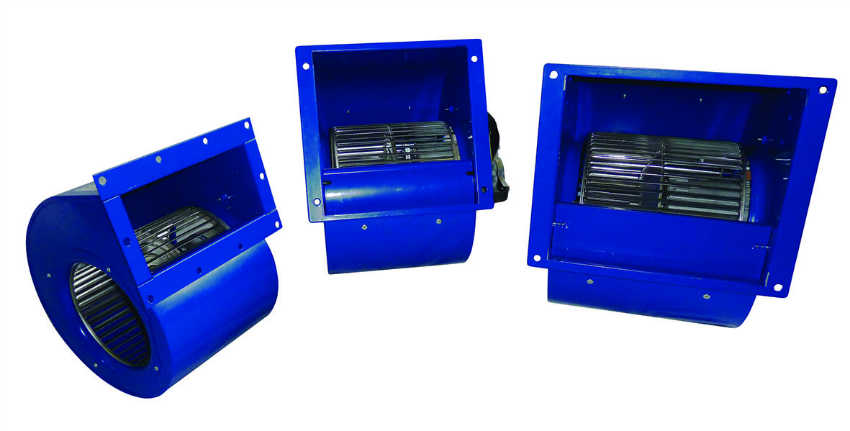20 January 2016
|
In many instances, upgrading fans to an electronically commutated (EC) centrifugal model is the most cost-effective method of ensuring that a ventilation system is both Ecodesign and ErP (commonly known as Lot11) compliant.
Here, Clive Greenstreet, Category Product Manager at Airflow Developments explains.
By now, readers will be well aware that the 2015 update to the Energy-related Products Directive (ErP) requires all industrial fans and motors to comply with stringent energy efficiency requirements. This is because the European Union is committed to reducing its CO2 emissions by at least 20 percent by 2020.
Here, Clive Greenstreet, Category Product Manager at Airflow Developments explains.
By now, readers will be well aware that the 2015 update to the Energy-related Products Directive (ErP) requires all industrial fans and motors to comply with stringent energy efficiency requirements. This is because the European Union is committed to reducing its CO2 emissions by at least 20 percent by 2020.
In order to achieve this, the Energy-related Products Directive (ErP), was to be introduced in two stages. The first stage in 2009 was to replace the 2005 Energy-using Products Directive (EuP) and the reasoning behind this is to improve the efficiency of high energy-consuming building services such as heating, hot water and ventilation systems.
The second stage of the ErP directive came into force in January 2015. This encompassed an even higher level of legislation regarding the energy efficiency of industrial fans. ErP covers all types of industrial fans (axial, centrifugal, mixed flow) and motors, with an input power of between 125W - 500Kw.
The second stage of the ErP directive came into force in January 2015. This encompassed an even higher level of legislation regarding the energy efficiency of industrial fans. ErP covers all types of industrial fans (axial, centrifugal, mixed flow) and motors, with an input power of between 125W - 500Kw.
Replace your entire ventilation system?
However, it is important that those who are responsible for the upgrade of ventilation systems in particular, do not automatically assume that they need to replace their entire ventilation system to meet the new guidelines. The reality is that in virtually all instances, simply upgrading the fan to an electronically commutated (EC) centrifugal model is the most cost-effective method of ensuring that a ventilation system is Ecodesign and ErP compliant.
There are a number of innovative ventilation solutions on the market that can not only save the capital outlay of a brand new system but also help to reduce long-term building operation and maintenance costs. For example, as well as consuming up to 80% less energy than conventional AC motors units, the new EC fans offer significant noise reduction, variable speed control and remote monitoring options.
There are a number of innovative ventilation solutions on the market that can not only save the capital outlay of a brand new system but also help to reduce long-term building operation and maintenance costs. For example, as well as consuming up to 80% less energy than conventional AC motors units, the new EC fans offer significant noise reduction, variable speed control and remote monitoring options.
Content continues after advertisements
Fan choice
| Airflow Developments has been manufacturing and supplying high quality fans and blowers for over 60 years. The company introduced a range of EC fans and enhanced its AC fan options, resulting in a full range of compliant fans. It is important to select a product that is fit for purpose and there are a number of options to be aware of. Single inlet EC direct drive centrifugal fans offer noteworthy benefits in performance and pressure development for applications where space availability for an air-moving device within equipment is limited. This type of fan is ideal for compact cooling in electronics cabinets, lighting, and smaller air conveying systems. Double inlet EC fans are designed for low noise and high efficiency applications such as general ventilation, industrial warm air movement, VAV boxes, air handling units, telecommunications and transmitter cabins. This range offers high airflows specifically suited for this type of application. |
Variable speed control
All EC fans offered by Airflow Developments incorporate variable speed control with EC high efficiency motors and balanced forward curved tab-lock constructed impellers. Duplex Fans have a dual shafted motor positioned between two impellers. It is designed to provide air across a large discharge footprint at high volume but having a small physical profile.
Offering excellent air velocity and pressures for applications such as: electronic cabinet cooling, air curtains, fan coil units, fume cupboards, plastic manufacturing procedures and medical applications. The end result is a compact direct drive fan, designed for handling air within 'space critical' equipment, which can offer significant benefits in performance and pressure development over other fan designs.
A range of high temperature, direct drive fans designed for handling hot air from gas burning appliances where temperatures of up to 250C through the fan are required. These are ideal for overhead radiant tube heating, domestic and commercial ovens, boiler / heater flue fans, gas fire flue boosters, hot air extraction and UV lamp cooling for printing.
Flue Gas Dilution fans offers an opportunity for flexibility in designing when positioning a boiler or water heater within a property, allowing low level discharge of burnt gases and removing the need of unsightly external, expensive chimney flues. Fan ratings make them suited to boilers with maximum boiler input ratings of between 80 and 650Kw.
Remember fans that are compliant with the ErP Directive can be identified by the CE symbol and the efficiency data placed on the product. However it is advisable to consult a professional to help select the right fan for your requirements.
For more information on Airflow’s extensive range of industrial ventilation solutions, visit: www.airflow.com, www.facebook.com/airflow or follow @airflowD










